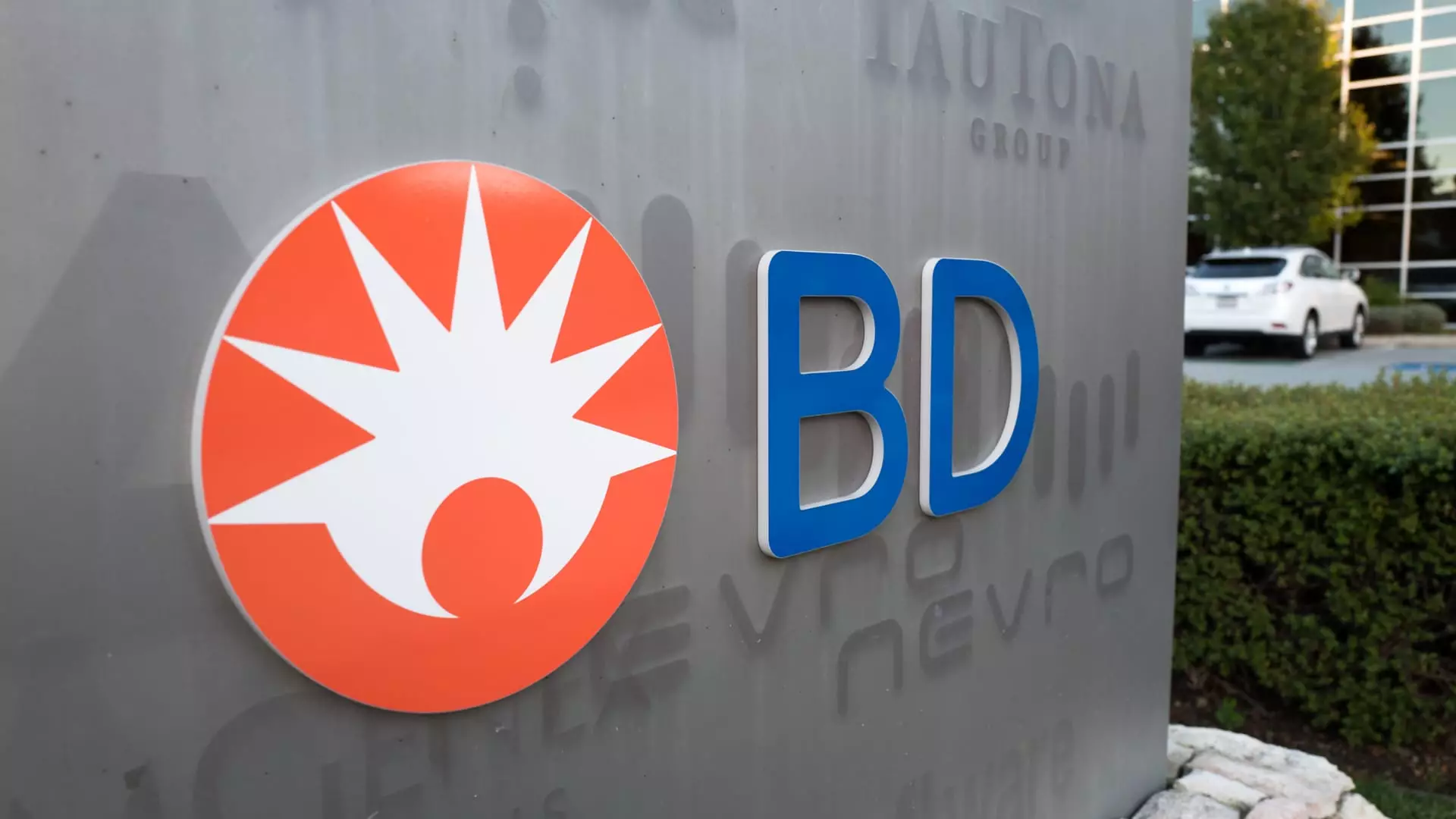Becton Dickinson, a prominent figure in the medical technology landscape, has recently garnered attention due to its strategic shifts and the influence of activist investor Starboard. This article delves into the complexities surrounding BDX’s business divisions, the motivation behind Starboard’s involvement, and the potential implications for the company and its stakeholders.
Becton Dickinson (BDX) specializes in developing, manufacturing, and distributing a wide range of medical supplies, devices, and diagnostic products aimed at enhancing healthcare delivery on a global scale. The company operates through two primary segments: MedTech and Life Sciences. The former encompasses solutions for medication delivery, advanced monitoring, and interventional products, while the latter focuses on diagnostic specimen collection and infectious disease detection.
In fiscal terms, MedTech has significantly outperformed Life Sciences, contributing approximately $15.1 billion in revenue versus Life Sciences’s $5.2 billion. This disparity raises questions not only about operational efficiency but also about the inherent value proposition presented by each segment. While MedTech showcases robust growth, Life Sciences’ stable, albeit slower, income stream is indicative of its market niche.
The merger of these two disparate business models under one umbrella appears progressively untenable, leading to Starboard’s assertion that a separation might be beneficial. As operational dynamics evolve, the philosophical foundation of maintaining two distinct entities under one organizational roof comes into question.
Starboard Value, a seasoned activist investor, is renowned for its strategic interventions in public companies. With an impressive track record—34% returns versus the Russell 2000’s 14%—its reputation precedes it. Starboard’s invitation to bifurcate BDX into two distinct business entities aligns with its historical modus operandi, which emphasizes unlocking shareholder value through heightened operational focus and alignment of strategic resources.
Their entry into Becton Dickinson’s landscape was marked by a clear strategy: advocate for the separation of the Life Sciences division. Starboard’s recommendation stems from critical insights into how MedTech operates at accelerated growth rates compared to Life Sciences. Despite the divergence in performance, the combined entity is currently assessed at a valuation multiples reflective of its weakest segment—creating a misalignment that investor visions should address.
This strategic activism is perceived not simply as interference, but rather as a call for a significant realignment of BDX’s core operational philosophies. In separating its divisions, BDX could not only enhance financial metrics but also refine managerial focus, allowing corresponding leadership teams to target optimal growth trajectories without the limitations of their current frameworks.
A deliberate separation of BDX into its MedTech and Life Sciences segments could yield considerable immediate financial benefits. For instance, the MedTech business, given its growth potential, is projected to achieve valuation multiples between 13 to 14 times EBITDA post-separation, whereas Life Sciences could exceed 20 times.
This reassessment of valuation could not only enhance the overall market appreciation of each new entity but would also allow BDX to address investor concern surrounding misaligned growth trajectories. Furthermore, distinct management teams could devote resources specifically tailored to their business contexts. The potential integration of acquisitions, currently overshadowed by broader company narratives, could result in improved margins and operational efficiencies.
The anticipated valuation for Life Sciences is estimated at around $30 billion, a figure that, while slightly low compared to its potential, signifies the pressure on BDX to act decisively in restructuring its business offerings. Retaining select synergistic elements that enhance MedTech operations could also ensure that both entities benefit from continued collaborative assets.
As events unfold, Becton Dickinson’s trajectory could reflect a shift spearheaded by both activist investors and management responsiveness to market sentiments. Starboard’s involvement highlights an evolving corporate dynamics paradigm where stakeholder value is King.
BDX’s leadership must navigate this landscape delicately—not just to appease external pressures but to genuinely assess the viability of their business structure. Whether prompted by activist suggestions or internal contemplation, the necessity for strategic realignment in response to market demands is more pronounced than ever.
Ultimately, the capacity for Becton Dickinson to thrive in a bifurcated scenario rests on the robust execution of separation strategies, ensuring each entity not only survives but thrives in their respective markets. As transparency about operational narratives continues, it becomes imperative for BDX to communicate effectively with stakeholders, clarifying how changes will enhance both immediate shareholder value and longer-term growth potentials.

